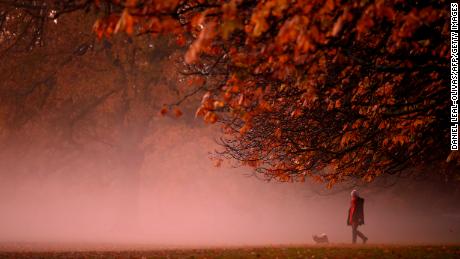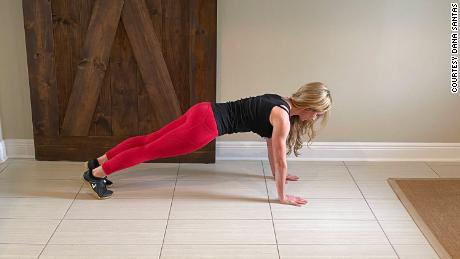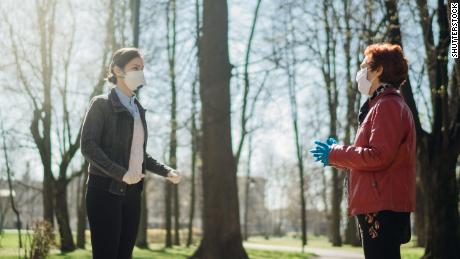Poor sleep has been blamed for increased stress, weight gain, a decrease in our ability to be creative and a reduced ability to solve problems. For those people who get the recommended amount of sleep yet still feel tired, however, it’s possible that we’re not resting our bodies and minds in the ways needed to restore them.
“I consider rest the bridge that takes us from our busy, chronically stressed schedules into those deeper levels of sleep we desire,” said Dalton-Smith, who is based in Birmingham, Alabama. Her book details the seven types of rest she recommends to increase productivity, get happier and live “your best life.” Among those types of rest: sensory rest, creative rest, social rest and passive physical rest (sleep).
These types of rest don’t come from crashing on the sofa over the weekend with a string of Netflix shows in the queue. “Rest is not simply the cessation of activity, the core of rest has to be restorative,” she said.
free online quiz to better understand where your own rest deficit might lie — about how to prioritize the seven types of rest she deems important to everyone.
CNN: Let’s start with the old adage that eight hours a night does a body good. Is this the right amount of sleep?
Dr. Saundra Dalton-Smith: Physical rest is the first kind of rest we need; it can be passive or active. We all have our baseline amount of sleep that makes us feel refreshed — that’s passive physical rest. Statistically, somewhere between six and eight hours is recommended. How much you need really depends on what’s going on in your life. If you’re training for a marathon, you might need more. A lot of people are under excessive stress now grieving family members, dealing with job losses. That can lead to needing more passive physical rest.
Once you determine the optimal hours of sleep for you, play around with it. When you cut back by two hours because you stayed up watching a movie, see how it makes you feel. These kinds of internal assessments can help you figure out where your optimal level of sleep is.
yoga,
stretching, leisurely
walks and massage therapy are all things that can help with active physical rest.
CNN: What about mental rest? How do we get that in this always-on world?
Dalton-Smith: Our culture trains us to multitask. For many of us, our work makes us think, process and calculate new ways of doing things. It uses a lot of mental energy, making it hard to find that quiet space.
Look at your computer — do you have 10 tabs open at any given time? Our minds are constantly jumping from one thought to the next. Let’s say you’re someone who’s trying to be mindful and in the moment — when you’re home with your family, for example — but your mind wants to jump to your to-do list. Try making what I call a “word chair.” Focus on a single word and return to it. This is like when you ask a kid to sit still in a chair. It’s hard because the child wants to bounce off the walls.
Your word chair might be “family.” When your brain goes elsewhere, direct it back to the idea in your word chair and focus on what you need to be present. That’s a way to achieve some mental rest.
CNN: With screens everywhere in our lives, tell us about sensory rest.
Dalton-Smith: Many of us are not aware of the amount of sensory input we experience during the day so we stay at a level of sensory overload. It’s not just from screen time. Things like background noises — even just people talking — can add to sensory overload. We need rest from that. Decreasing your screen time is a start. Be aware of how it affects you.
Another thing you can control is unnecessary noise. Downgrade the number of notifications on your devices so email and social media aren’t putting a further demand on your sensory level by controlling when you engage with them. Turn off the TV when nobody is watching. Most of us do some of these restorative activities naturally — we intuitively know when it will make us feel better.
CNN: The fourth type of rest you mention is creative rest. Do only creative people need it?
Dalton-Smith: Everyone needs creative rest. It’s for anyone who has to solve problems and find solutions. And it doesn’t mean taking a painting class or a pottery class — that’s creative work. Creative rest is allowing yourself to appreciate beauty, whether that’s natural beauty, like the mountains or ocean, or creative beauty, like artwork, music or theater. When you experience the creativity of others, it can awaken something inside you and inspire you. Even if you have to turn to virtual things right now, experience beauty in whatever forms inspire you for creative rest.
CNN: Some people can get stuck in a people-pleasing cycle. How does emotional rest help?
Dalton-Smith: A lot of energy goes into keeping a smile on your face even when you’re not happy. It’s important to have someone you can really be authentic and real with about what you’re feeling and not have to pretty up your emotions so they’re easier for others to digest — that’s when you get emotional rest. It can be a trusted family member or friend, but it can also be someone you’re paying, like a therapist or a coach. Emotional rest helps with mental health because you’re not keeping toxic emotions bottled up.
CNN: The social rest you describe isn’t taking a break from socializing, is it?
Dalton-Smith: What I call social rest is the rest we experience around life-giving people. The first part of evaluating your need for it is looking at the different people in your life and how they pull from your social energy. If they are requiring and asking things of you, they’re negatively pulling — but that doesn’t mean they’re negative people. They might be your spouse, co-workers or kids.
You get social rest by being around people who don’t need anything from you — you get fed from time in their presence. The people who don’t need anything from who don’t put demands on you — they’re not the loud ones in your life. You have to intentionally make space for them.
CNN: The last type of rest you refer to is spiritual. What about people who don’t consider themselves spiritual?
Dalton-Smith: At the core of spiritual rest is that feeling of acceptance and belonging to something other than just our own self. For some people, that’s faith-based or religious. For others, how they connect with spiritual rest typically has to do with community and a sense of belonging. Look for those places where you feel like you’re blessing and helping other people — where it’s not just all about you. When you’re pouring back out into the world with the feeling of contributing to something bigger, it’s a form of spiritual rest.











